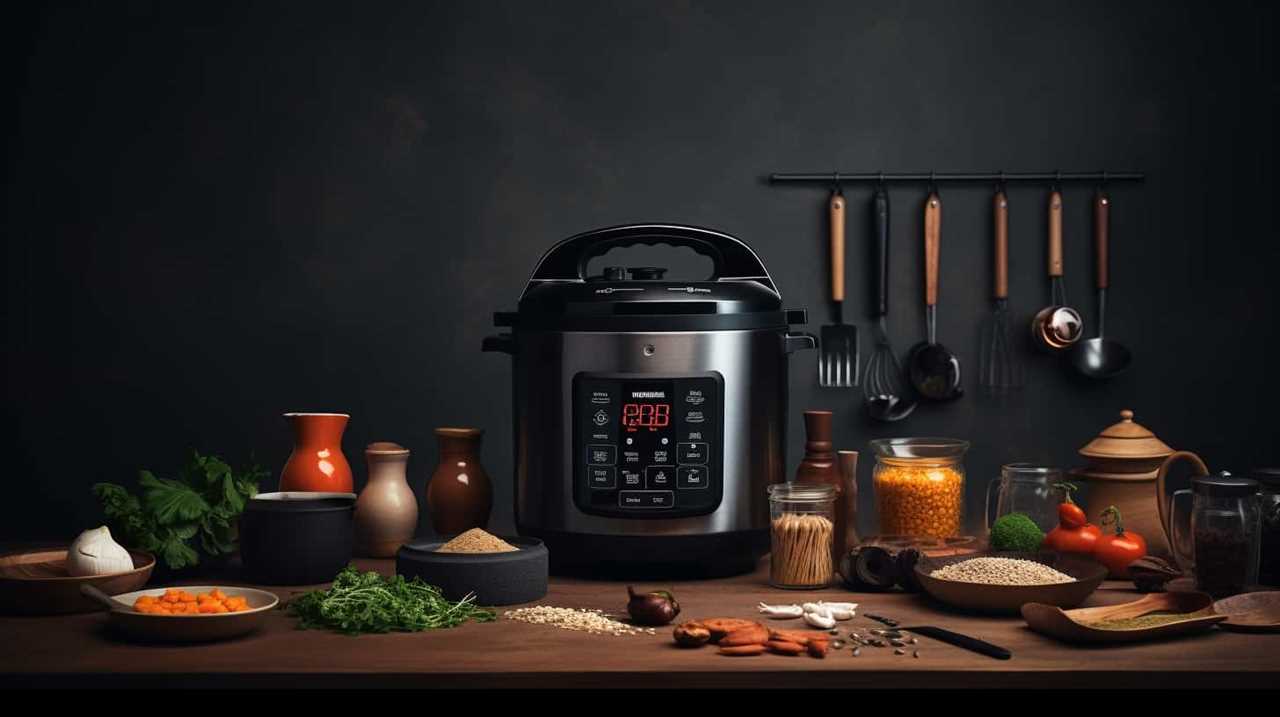In the field of electrical engineering, the practice of connecting appliances in parallel has gained widespread acceptance. This method of connecting appliances provides several benefits that not only enhance safety but also increase efficiency and convenience.
Understanding the rationale behind this approach is crucial for those seeking to master the intricacies of electrical systems. By connecting appliances in parallel, the risk of electrical accidents is mitigated as this configuration allows each appliance to operate independently of the others.
Additionally, parallel connection enables the simultaneous operation of multiple devices, preventing power loss and reducing voltage drop across the network. Furthermore, troubleshooting and maintenance become easier, and the flexibility to add or remove appliances is facilitated.
Moreover, parallel connection aligns effortlessly with the integration of smart home technology, making it a cost-effective and convenient choice for modern households.

Key Takeaways
- Parallel connection enhances safety and reliability by minimizing the impact of a failure in one appliance on the others and ensuring uninterrupted functionality.
- Parallel connection allows for more efficient distribution of energy, reducing wastage and overall energy consumption.
- Simultaneous operation of appliances in parallel ensures each appliance receives the necessary power without overloading the system, maximizing efficiency.
- Parallel connection offers cost-effectiveness and convenience by sharing power among multiple appliances, reducing installation and maintenance costs, and enabling easy integration and scalability.
Increased Safety
One key reason why appliances are connected in parallel is to ensure a higher level of safety for users. By connecting appliances in parallel, the overall reliability of the system is increased, thus reducing the risk of accidents.
In parallel connections, each appliance operates independently, meaning that a failure in one appliance does not affect the others. This redundancy provides enhanced safety as it minimizes the likelihood of a complete system failure.
Additionally, parallel connections allow for enhanced user experience by providing uninterrupted functionality even if one appliance malfunctions. This is particularly important in critical applications such as medical equipment or industrial machinery, where any disruption can have serious consequences.
Therefore, connecting appliances in parallel not only increases reliability but also ensures a safer and more seamless user experience.

Improved Efficiency
Connecting appliances in parallel offers several benefits in terms of improved efficiency.
Firstly, it allows for more efficient distribution of energy, as each appliance can draw the required amount of power directly from the supply without affecting the others.
Additionally, parallel connections enable simultaneous operation of multiple appliances, reducing downtime and maximizing productivity.
Energy Distribution Benefits
To achieve improved efficiency in energy distribution, appliances are connected in parallel. This arrangement offers several energy distribution benefits, such as energy conservation and improved load management.

By connecting appliances in parallel, each appliance receives the same voltage, ensuring that they all operate at their optimal levels. This leads to energy conservation as each appliance only consumes the required amount of energy, avoiding wastage.
Moreover, parallel connection allows for better load management. In this configuration, appliances can be individually switched on or off, allowing for more flexibility in managing the power demand. This not only helps in distributing the load evenly across the appliances but also prevents overloading of a single appliance.
Simultaneous Operation Advantages
The utilization of parallel connection for appliances enables the simultaneous operation of multiple devices, leading to improved efficiency in energy distribution.
By connecting appliances in parallel, the total capacity of the system is increased, allowing for the distribution of power more effectively across multiple devices. This increased capacity ensures that each appliance receives the necessary amount of power without overloading the system.

Moreover, parallel connection allows for optimized energy usage as appliances operate independently of each other. This means that if one appliance requires less power, it can draw only the necessary amount, while other appliances can continue to operate at their required power levels.
This flexibility in energy distribution ensures that the system operates at its maximum efficiency, minimizing wastage and reducing overall energy consumption.
Simultaneous Operation of Multiple Devices
Simultaneous operation of multiple devices is made possible through the parallel connection of appliances. This setup allows for efficient power distribution, ensuring that each device receives the necessary electrical supply without compromising performance.
Moreover, parallel connection enhances convenience and productivity by enabling users to operate multiple devices simultaneously.

However, it is essential to manage the load carefully to avoid potential overload risks, which could lead to equipment damage or electrical hazards.
Efficient Power Distribution
Multiple devices can be efficiently operated simultaneously through the use of parallel connections. This method of connecting appliances provides an effective power distribution system, enabling each device to receive the required power independently.
By distributing the load across multiple parallel circuits, energy consumption can be reduced, and power usage can be optimized. Parallel connections allow for equal sharing of the total current among the devices, ensuring that each device receives the necessary power without compromising the operation of others.
This efficient power distribution not only enhances the overall performance of the appliances but also prevents overloading and voltage drops.

Moreover, parallel connections enable easy troubleshooting and maintenance, as each device can be isolated and serviced individually.
As a result, parallel connections are widely used in various applications to achieve efficient power distribution and simultaneous operation of multiple devices.
Increased Convenience and Productivity
When appliances are connected in parallel, it provides an efficient power distribution system that allows for the convenient and productive operation of multiple devices. This increased connectivity and simultaneous operation of multiple appliances offer several benefits, including:
- Time-saving features: With parallel connections, appliances can operate independently, allowing you to perform multiple tasks simultaneously. For example, you can cook on the stove while using the microwave or run the dishwasher while doing laundry.
- Increased productivity: Connecting appliances in parallel enables you to accomplish more within the same timeframe. This can be particularly useful in commercial settings or busy households where multiple tasks need to be completed efficiently.
- Flexibility: Parallel connections offer the flexibility to use different appliances in different locations without affecting their performance. You can connect appliances where it’s most convenient for your workflow.
- Convenience: Instead of having to wait for one appliance to finish before using another, parallel connections allow you to use multiple devices simultaneously, saving you time and effort.
- Enhanced multitasking: By connecting appliances in parallel, you can effortlessly multitask and streamline your daily activities, making your life more convenient and productive.
Potential Overload Risks
One potential risk of connecting appliances in parallel is the possibility of overloading the power system. When multiple devices are operated simultaneously, they draw current from the power source, and if the total current exceeds the capacity of the system, an overload can occur. This can lead to various issues, including tripped circuit breakers, overheating of wires and appliances, and even electrical fires.

To ensure reliable operation and electrical safety, it is important to carefully consider the power requirements of each appliance and the capacity of the power system. Monitoring the total current drawn by all appliances is crucial in preventing overloads. Using circuit breakers and fuses that are appropriately sized and rated for the appliances can protect against overloads.
Additionally, regular inspection and maintenance of the electrical system can detect potential issues and prevent accidents. By taking these precautions, the risk of overload and its associated hazards can be minimized, ensuring the safe and reliable operation of connected appliances.
Preventing Power Loss
To prevent power loss, appliances are connected in parallel, ensuring efficient distribution of electricity. This method allows for power efficiency and effective electrical load balancing.
Here are some reasons why parallel connection is used:

- Equal distribution: Parallel connection ensures that each appliance receives the same voltage, preventing power loss due to imbalanced loads.
- Redundancy: If one appliance malfunctions or is disconnected, the others can continue to operate, minimizing power loss.
- Increased capacity: Parallel connection allows for the addition of more appliances without overloading the circuit, ensuring optimal power distribution.
- Easy maintenance: With parallel connection, individual appliances can be easily serviced or replaced without disrupting the operation of other appliances.
- Enhanced reliability: Parallel connection reduces the chances of a single point of failure, ensuring a more reliable power supply.
Reducing Voltage Drop
To ensure efficient distribution of electricity and prevent power loss, appliances are connected in parallel, reducing voltage drop. Voltage drop occurs when there is a decrease in voltage as current flows through a conductor. This drop can be significant when appliances are connected in series, as the total resistance increases, causing a decrease in voltage supplied to each appliance.
By connecting appliances in parallel, each appliance receives the same voltage, minimizing voltage drop. Additionally, parallel connection allows for voltage stabilization, as the voltage supplied remains constant regardless of the number of appliances connected. This ensures that each appliance operates at its optimal voltage level, maximizing efficiency and performance.
Furthermore, parallel connection enables load sharing, distributing the current evenly among the appliances, preventing overloading and enhancing overall system reliability.
Balancing Electrical Load
The balancing of the electrical load is crucial in ensuring optimal performance and efficiency of appliances. Balancing power consumption and effectively managing the electrical load can help prevent overloading, reduce energy wastage, and extend the lifespan of appliances.

Here are five key reasons why balancing electrical load is important:
- Prevents overloading: Balancing the load ensures that no single circuit or appliance is carrying more current than it can handle, preventing overheating and potential damage.
- Reduces energy wastage: By evenly distributing the load, power consumption is optimized, reducing energy waste and lowering utility costs.
- Improves appliance lifespan: Uneven electrical load can cause excessive wear and tear on appliances, leading to premature failure. Balancing the load helps extend the lifespan of appliances.
- Enhances system stability: Balanced load distribution prevents voltage fluctuations and improves the stability of the electrical system.
- Allows for future expansion: Balancing the load allows for the addition of new appliances without overburdening the existing system, ensuring scalability and flexibility.
Ensuring Stable Power Supply
To ensure a stable power supply, connecting appliances in parallel offers several advantages.
Firstly, it improves power distribution efficiency by allowing each appliance to receive the required amount of current independently. This helps prevent overloading and ensures that each appliance operates optimally.
Additionally, connecting appliances in parallel helps reduce voltage fluctuations and minimizes the risk of power interruptions, providing a consistent and reliable power supply for all connected devices.

Power Distribution Efficiency
How can power distribution efficiency ensure a stable power supply for appliances connected in parallel?
Power distribution efficiency plays a crucial role in ensuring a stable power supply for appliances connected in parallel. By improving power reliability and increasing energy savings, power distribution efficiency helps in maintaining a consistent and uninterrupted flow of electricity to all connected appliances.
Here are five key ways in which power distribution efficiency contributes to a stable power supply for parallel-connected appliances:
- Minimizes voltage drops and fluctuations
- Balances the load across multiple appliances
- Reduces the risk of overloading circuits
- Provides better protection against power surges
- Enhances overall system performance and lifespan
By optimizing power distribution efficiency, we can reduce the likelihood of power interruptions, prevent damage to appliances, and ensure a reliable and efficient operation.

Now, let’s delve into the next section about reducing voltage fluctuations.
Reducing Voltage Fluctuations
To ensure a stable power supply, one key factor is reducing voltage fluctuations when appliances are connected in parallel.
Voltage stabilization is crucial in maintaining a consistent power supply to appliances, especially when they are connected in parallel. When appliances are connected in parallel, they share the same voltage supply. However, due to variations in power consumption and electrical resistance, voltage fluctuations can occur, leading to potential damage or malfunction of appliances.
To mitigate these fluctuations, voltage stabilization techniques are employed. These techniques involve the use of voltage regulators and stabilizers that monitor and adjust the voltage levels to ensure a steady supply to all connected appliances.

Minimizing Power Interruptions
In order to ensure a stable power supply, minimizing power interruptions is essential when appliances are connected in parallel. Power interruptions can disrupt the functionality of appliances and lead to operational inefficiencies.
To minimize power interruptions and ensure stable power supply, the following measures can be implemented:
- Implement effective power management strategies to optimize power distribution and minimize power fluctuations.
- Install backup power systems, such as uninterruptible power supplies (UPS), to provide a reliable power source during outages.
- Regularly maintain and inspect electrical equipment to identify and address any potential issues that may lead to power interruptions.
- Enhance grid stability by implementing advanced control systems and monitoring technologies to detect and respond to power disruptions promptly.
- Invest in renewable energy sources and distributed generation to reduce dependence on centralized power grids and enhance overall grid resilience.
Minimizing Circuit Overload
One method for preventing circuit overload is by connecting appliances in parallel. When appliances are connected in parallel, each appliance is connected to the same voltage source, but they have their own individual current paths. This means that each appliance can draw the current it needs without affecting the other appliances.
By distributing the current among multiple paths, the risk of circuit overload is minimized. This is particularly important in situations where multiple high-power appliances are being used simultaneously, as it reduces the strain on the circuit and prevents circuit failure.

Additionally, connecting appliances in parallel allows for better optimization of power consumption, as each appliance can operate independently and efficiently without being limited by the others.
Easier Troubleshooting and Maintenance
Easier troubleshooting and maintenance is facilitated through the parallel connection of appliances. When appliances are connected in parallel, it provides several benefits for troubleshooting and maintenance. These include:
- Individual Control: Each appliance can be controlled independently, allowing for easier isolation of issues during troubleshooting.
- Simplified Testing: With parallel connection, it is easier to test individual appliances without disrupting the operation of others.
- Reduced Downtime: In case of a malfunction, the parallel connection ensures that only the faulty appliance needs to be taken offline, minimizing downtime for other appliances.
- Efficient Maintenance: Parallel connection allows for easier access to individual appliances, making maintenance tasks such as cleaning or repairs more convenient and efficient.
- Enhanced Safety: With parallel connection, it is easier to isolate and disconnect specific appliances from the power source, ensuring the safety of maintenance personnel.
Flexibility in Adding or Removing Appliances
When it comes to the connection of appliances, one of the key advantages of a parallel setup is the flexibility it offers in adding or removing appliances. This flexibility is particularly beneficial in the context of home automation, where there is a growing need for adaptability and ease of appliance reconfiguration.
In a parallel connection, each appliance operates independently, allowing for seamless integration and removal of devices without affecting the overall system. This means that homeowners can easily add new appliances to their existing setup or remove ones that are no longer needed, without disrupting the entire network.

This level of flexibility offers homeowners the freedom to customize their home automation system according to their changing needs and preferences, ensuring optimal efficiency and convenience.
Compatibility With Smart Home Technology
Appliances connected in parallel offer seamless compatibility with smart home technology. This enables homeowners to integrate their appliances into a unified smart home system, enhancing convenience and control. Here are five key benefits of parallel connection in relation to smart home technology:
- Interoperability: Parallel connection allows appliances from different manufacturers to communicate and work together, overcoming interoperability challenges and ensuring a smooth user experience.
- Integration: Parallel connection enables appliances to be easily integrated with other smart devices in the home, such as voice assistants or smart thermostats, creating a cohesive smart home ecosystem.
- Remote Control: Parallel connection allows homeowners to remotely control their appliances through smart home apps, providing convenience and flexibility.
- Energy Efficiency: With parallel connection, appliances can share information and optimize their operation based on real-time data, resulting in improved energy efficiency.
- Data Privacy Concerns: Parallel connection should prioritize data privacy and security to address concerns about unauthorized access and potential data breaches.
Cost-Effectiveness and Convenience
Parallel connection offers significant cost-effectiveness and convenience for homeowners integrating their appliances into a smart home system.
One of the main cost saving benefits of parallel connection is the ability to share power among multiple appliances. By connecting appliances in parallel, homeowners can avoid the need for separate power sources for each appliance, leading to reduced installation and maintenance costs.

Additionally, parallel connection enables remote control features, allowing homeowners to conveniently operate their appliances from anywhere using a smartphone or a central control panel. This eliminates the need to manually interact with each individual appliance, saving time and effort.
Furthermore, parallel connection provides flexibility in terms of adding or removing appliances from the system, making it easy to upgrade or replace appliances without significant changes to the overall system.
Frequently Asked Questions
Can Appliances Connected in Parallel Still Operate if One of Them Malfunctions or Stops Working?
Appliances connected in parallel can still operate if one malfunctions or stops working. However, this may impact energy consumption and overall performance. Connecting appliances in parallel offers advantages such as flexibility and reliability, but also disadvantages like increased energy consumption and potential overload.
What Is the Maximum Number of Appliances That Can Be Connected in Parallel?
The maximum number of appliances that can be connected in parallel depends on the maximum load capacity of the power source. Connecting appliances in parallel offers advantages such as increased reliability and flexibility in operation.

Are There Any Specific Safety Precautions That Need to Be Taken When Connecting Appliances in Parallel?
Safety measures for parallel appliance connections include ensuring that the appliances have compatible voltage and current ratings, using proper wiring and connectors, and avoiding overloading the circuit. Common issues when connecting appliances in parallel include unequal current distribution and potential for short circuits.
How Does Connecting Appliances in Parallel Affect the Lifespan of the Electrical Wiring in a Home?
Connecting appliances in parallel can have a significant impact on the lifespan of electrical wiring in a home. This parallel connection affects the efficiency of the electrical circuit and ensures a balanced load distribution, reducing the strain on the wiring and extending its longevity.
Can Appliances Connected in Parallel Still Function Properly if They Have Different Power Ratings or Voltage Requirements?
Connecting appliances with different power ratings in parallel can have implications. The appliance with a higher power rating may overload the circuit, affecting the overall performance. Similarly, connecting appliances with different voltage requirements in parallel can cause voltage imbalances and potential damage.
Conclusion
In conclusion, connecting appliances in parallel offers numerous benefits such as increased safety, improved efficiency, simultaneous operation of multiple devices, prevention of power loss, and reduced voltage drop.

It also provides easier troubleshooting and maintenance, flexibility in adding or removing appliances, compatibility with smart home technology, and cost-effectiveness and convenience.
One interesting statistic is that parallel connections can reduce voltage drop by up to 50%, ensuring more efficient and reliable operation of appliances.










